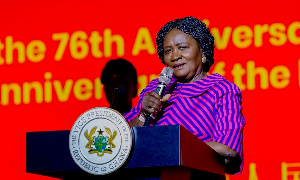Introduction Of Petroleum Price Mitigation Fund In Ghana – SHIFTING THE BURDEN OF PETROLEUM SUBSIDY FINANCING FROM GOVERNMENT TO CONSUMERS
Dr. Mohammed Amin Adam
Executive Director
Africa Centre for Energy Policy
INTRODUCTION
The President of Ghana early in the year 2015 announced the decision of Government to introduce a Price Mitigation Fund to insure against future price hikes resulting from rising crude oil prices. The Minister of Finance has subsequently unveiled Government’s plan to review the Petroleum Pricing Formula to implement the President’s Directive. Whether this policy is good or bad, necessary or not, has been the subject of intense public debate.
There is no doubt that a price mitigation fund has its relevance. It prevents the government against the fiscal risks of having to subsidize petroleum products when international crude oil prices are increasing substantially or frequently.
It also introduces some transparency and predictability in the pricing of petroleum products such that consumers are able to know when changes in prices will be passed on to them and when the mitigation fund can come to their rescue.
Also, due to the fact that the Price Mitigation Fund is accumulation of levies paid by consumers, there is increased accountability as consumers become concerned about the utilization of the funds. This is unlike the many levies that are currently being paid by consumers without knowledge of the extent of accumulation of funds through such levies (e.g. Energy Fund levy, Exploration levy, etc).
On the other hand, the mitigation fund shifts responsibility for financing consumption subsidies to consumers who pay the mitigation levy through pump prices of petroleum products or forgo windfalls for the purpose of accumulating the mitigation fund.
IS IT NECESSARY?
There is no obvious answer. On one hand, the petroleum price build up has many and varied taxes and levies paid by consumers. Therefore introducing another levy will over-burden them. It is however important to state a mitigation fund must not necessarily be accumulated from levies but could be built from windfalls and budgetary allocations by Government.
On the second hand, a price mitigation fund is necessary only when crude oil prices are increasing above what is considered sustainable, thus, government’s decision to introduce the fund when current crude oil prices are falling drastically, is an attempt to deny consumers the windfalls they deserve as a consequence of the Automatic Adjustment Pricing Formula (AAPF).
Fact is the AAPF becomes problematic and politically incorrect when price risks are large and permanent. For example, when crude oil prices rose to $145 per barrel in 2008, most governments around the world failed to pass prices fully to consumers. In this case, mitigation funds become insufficient to accommodate the effect; and could run into deficits, as its services are required at every giving time.
It is therefore important to introduce mechanisms that address the effects of the AAPF during periods of large and sustained upwards price adjustments. A mitigation fund is one of such mechanisms. However, such funds become ineffective if they are designed without rules that complement the AAPF. Government is yet to announce the detail package of the mitigation fund and its operability. However, there are three main rules that have been used in different countries.
THREE APPROACHES
For a Price Mitigation Fund to become an effective tool for smoothening prices when factors that affect domestic petroleum product prices change, the following rules provide the appropriate environment for the operations of the Fund..
i. Moving average rule
This is a measure of benchmark price, which becomes the point beyond which the mitigation fund is deployed. The benchmark price, which becomes the spot price for petroleum products, is determined as the moving average of past petroleum prices. When adjusted price of petroleum arising from the price triggers such as change in international crude oil price, exceeds the moving average price, the Mitigation Fund is deployed to smoothen the price by funding the difference between the adjusted and benchmark prices.
ii. Trigger rule
In this rule, a price band around crude oil prices (+/-10%) is established. When crude oil price rises by less than 10%, it triggers adjustment in domestic petroleum prices, which is passed through to consumers. When crude oil price rises by more than 10%, the Mitigation Fund is deployed to compensate for the adjustments in the associated domestic petroleum prices. Also, in the event of a fall in crude oil price by less than 10%, the windfalls reflecting in domestic prices are transferred to the Mitigation Fund, since any price adjustments may be insignificant to cause changes in goods and services. However, where a fall in crude price is more than 10%, the windfall is passed to consumers through reduction in domestic petroleum prices.
iii. Max-min rule
This rule requires the setting of maximum and minimum prices for petroleum products. Maximum prices are the highest product prices can reach. Any price adjustment more than the maximum price should be funded with the mitigation fund. Minimum price is the lowest petroleum product prices can reach. For any price adjustment that leads to petroleum product prices less than the minimum price, the windfall is transferred to the to the Mitigation Fund. Alternatively, when adjusted price exceeds the maximum price of petroleum, the Mitigation Fund is deployed to smoothen the price.
WHICH WAY FOR GHANA?
Each of the three rules can work in Ghana. However, the choice of a rule should be based on two factors – the speed and size of accumulation of the Mitigation Fund; and the rate of deployment of the Fund when triggered.
The moving average rule is based on past prices, which may not necessarily reflect current and future prices due to oil price uncertainty. It therefore exposes the Fund to extreme price volatility and endangers its sustainability. Also, the Fund does not benefit from windfalls when price movement is on a reverse. This is good for consumers but defeats the spirit behind accumulating the Mitigation Fund during periods of low prices.
Both the trigger and max-min rules ensure that apart from a mitigation levy, the Fund can also receive windfalls within appropriate boundaries. The sustainability of the Fund improves under these rules. However, considering that the trigger rule sets the price band against the current spot price, often higher than the last spot price before price adjustment, it leads to increasing prices at all times. For example assuming spot price is $100 per barrel of crude oil with a domestic price band of +/-10%, an increase in crude oil price by 5% leads to a new spot price of $105 per barrel. The new spot price reflects in the adjustments of domestic product price by 5% for example. This is passed on to consumers since the adjustment does not exceed the 10% band to warrant a deployment of the Mitigation Fund. The next price band will therefore be +/-10% around domestic prices based on international crude oil price of $105 per barrel and so on. Therefore, whilst this approach accumulates substantial funds in the Mitigation Fund, it fails to perfume its role as mitigation against price hikes.
In the case of the max-min rule, both the maximum and minimum prices are fixed by policy. Consumers are therefore not subject to too frequent price risks. It is easy to implement. It is more transparent. Ghana is therefore better off by adopting the max-min rule. However, government must subject the determination of the maximum and minimum prices to public debate. The maximum and minimum prices should also be time-bound (say 5 years) and should be reviewed thereafter to reflect changing price conditions, and ensure that the Mitigation Fund is sustainable as a cushion against higher price risks.
PRICE MITIGATION OR SOCIAL MITIGATION?
It must be stated that a price mitigation fund is an insurance against higher price risks but also has a social effect of shielding consumers against the cost of higher oil prices and the implications for their welfare. Nonetheless, the social effect of the fund may be limited to by the extent to which poor and vulnerable segments of society could feel its spillover impact through transport fares and prices of goods and services. Considering that GPRTU members refused to comply with announced reduction in transport fares by 5% following the reduction by NPA of ex-pump prices of petroleum products by 10%, there is no guarantee that the deployment of the price mitigation fund where necessary, could lead to reduction in transport fares. The mitigation fund is therefore reduced to protecting the rich and increasing their mileage with consequences for the environment.
Against this background, Government must evaluate the social impact of the price mitigation fund before introducing it. There are lessons to learn from our recent history. In 2005, following the petroleum deregulation policy, the Government introduced a social mitigation levy whose proceeds were used to finance the importation of metro mass busses. Apart from directly impacting on the poor, an expanded mass transport system reduces carbon emissions. Government must therefore consider the advantages of introducing a price mitigation fund to protect the rich against higher price risks, or re-introducing the abolished social mitigation fund to mobilize resources for the expansion of the mass transport system for other social interventions for the protection of the poor and socially marginalized.
CONCLUSIONS
There is no doubt that the proposed Price Mitigation Fund will protect consumers against higher price risk in petroleum product pricing. However, experience has shown that mitigation funds have often not been effective because they do not have sufficient balances when price changes are larger and persistent. They also often lack transparency whilst investment decisions relating to the Funds are often without sound commercial considerations.
These problems can however be addressed if there are strict rules governing the utilization of the Fund, and the discipline within the government to comply with the rules. The above rules are only prescriptive but can be modified to reflect Ghana’s conditions. Government must therefore publish proposals for public debate on funding mechanisms for the Mitigation Fund, its management and the utilization of the proceeds.
It is also important to note that the introduction of the Fund will shift the burden of price-based subsidies to consumers. This way of financing consumption subsidies is more sustainable especially for Ghana, which is faced with fiscal challenges. However, the new policy will succeed if the subsidy burden is not too heavy for consumers as they are already carrying a significant burden of paying for some subsidies such as cross subsidies on some petroleum products and the Uniform Petroleum Pricing Fund (UPPF). Consumers also pay eleven other taxes, levies and margins on petroleum prices.
To ensure that the Mitigation Fund works without unduly increasing consumer burden, Government must consider abolishing some of the levies that are no longer justifiable such as the Exploration and TOR Debt Recovery levies. Government should also improve on the transparency of the uses of levies such as the Energy Fund, Road Fund, and the newly introduced Special Petroleum Tax. These provide assurances to consumers that the Price Mitigation Fund will be transparently managed.
Also, Government should consider allocating its budget for petroleum subsidies to the Mitigation Fund, to share the financing burden on consumers of petroleum products. For instance, Government allocated GHC50 million for petroleum product subsidies in the 2015 Budget. Such allocations should be transferred to the Mitigation Fund to ensure quick accumulation of resources in the Fund.
Opinions of Wednesday, 21 January 2015
Columnist: Adam, Mohammed Amin














